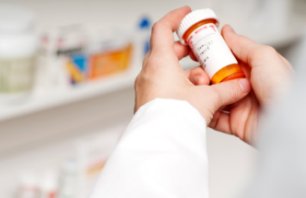Proper disposal of biomedical waste involves far more than simply placing soiled materials into designated containers. Organizations that generate biohazardous, potentially infectious, or regulated medical waste must be aware of their responsibilities, as a generator, to properly classify their waste. Once the waste has been characterized, the generator needs to know how to properly package it for pickup and transportation. Doing so is essential to ensure staff, patient, and environmental safety while remaining compliant with required federal, provincial, and local regulations.
Healthcare facilities may generate different types of regulated wastes. However, the most common is biomedical waste, which includes any waste saturated with liquid or semi-liquid blood or other potentially infectious materials (OPIM) that has the potential to cause harm or infect humans. There are also federal requirements for the proper transportation of biomedical waste, which may be defined more broadly than just infectious waste from a transportation perspective.
Step 1: Choose the Correct Container
Organizations should use appropriate containers for the waste being disposed. These might include corrugated boxes or specially designed reusable containers (refer to applicable federal, provincial, or local regulations for specific requirements). For corrugated boxes, follow the manufacturer’s instructions, such as sealing the bottom flaps with at least 2-inch wide, clear packing tape. Containers should have clear labels and directional arrows to show the top and bottom of the receptacle.
Step 2: Line the Medical Waste Container with the Correct Bag
Biomedical bag colours might vary by waste stream. Place the appropriate biohazardous waste bag inside the container and follow the container use instructions, as applicable.
Step 3: Place Only Approved Waste in the Lined Container
Only biomedical waste should be placed in these containers. Each province might have their own definition of what constitutes biomedical waste, so be sure you know what can be placed in the container.
Always follow your waste vendor’s acceptance policy. For example, as per Stericycle’s Waste Acceptance Policy items such as medications, loose needles, scalpels, general trash, and other items listed as non-conforming waste cannot be disposed of in a waste container designated for biomedical waste. Sharps waste must be disposed of directly into a puncture-resistant container in accordance with National Standard of Canada (CAN)/CSA Standard CAN/CSA Z316.6. Cytotoxic waste and anatomical waste are forms of biomedical waste that must be segregated. These items should be disposed of in red and marked for incineration.
Check the container’s maximum gross weight. Waste management partners, including Stericycle, have established weight limits for the safe handling of containers. To ensure acceptable lifting conditions and proper disposal, please refer to your vendor’s requirements and avoid overfilling containers.
Step 4: Tie the Bag and Seal the Container Properly
Staff must secure containers when the bag is full, leaving room at the top for proper closure. While following your organization’s safety and/or handling policy, gather the bag edges and twist the top of the bag to seal the contents. Then, they should make a strong, hand-tied single or gooseneck knot to prevent any leakage. A zip tie or tape can also be used to secure the knot.
After securing the bag, staff must seal the transport container. Be sure to follow the manufacturer’s (or your waste provider’s) instructions. Some containers may require the engagement of auto-locking flaps or securing of the lid, depending on the receptacle design. For corrugated boxes, follow the closure instructions that may include sealing the top of the box with appropriate packing tape, or closing the interlocking lid.
Closed yellow bags should not be visible once the outer container is closed and sealed. Improperly packaged waste or damaged receptacles may be denied pickup by the service provider or returned to the healthcare organization.
Step 5: Prepare the Waste for Pickup
Ensure each box has the appropriate labels required by federal, provincial, and local laws. Labels may need to include waste-hauler barcodes or other identifying information. Consider working with a provider like Stericycle, which supplies compliant labels as part of their service.
Step 6: Train Staff on Biomedical Waste Handling
All healthcare employees should undergo regular training as determined by the Provincial Ministry of Labour and the related Occupational Health and Safety Acts, the Federal and Provincial Ministry of the Environment as well as organization-specific protocols. It is important to understand the federal, provincial, and municipal requirements and to make sure you have the appropriate training in place.
Workplace Hazardous Materials Information System (WHMIS) is a nationwide system that gives employers and workers information about hazardous products used in the workplace. WHMIS requires employers to provide all training necessary to work with hazardous substances and must keep a written record of their employee education program.
Stericycle offers trainings and resources with our OHS Compliance Services. Depending on the service offering selected, staff can access online modules at their convenience, and training is documented once completed.
Learn more about how Stericycle can help you maintain a safe and compliant biomedical waste program.



